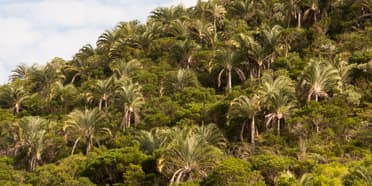- You are here:
- Home
- Countries & Parks
- Madagascar Parks
- Andohahela National Park
- Reviews
- Expert Reviews
Expert Reviews – Andohahela NP

Anthony is a photographer and writer for travel magazines and Lonely Planet, including the guides to Kenya and Botswana & Namibia.
1 person found this review helpful.
Southern Madagascar’s Best-Kept Secret
In the remote deep south, Andohahela is one of Madagascar’s most underrated and least-visited parks. Its vital statistics are impressive: 120 bird species and 12 different kinds of lemurs in a stirring mix of montane rainforest and typically Madagascan spiny forest. The park even has crocodiles! Because there are so many lemurs at large, my visits here are all about tracking down some of the more obscure members of the lemur family tree. Some examples are the southern lesser bamboo lemur, the Milne-Edwards sifaka and the Fleurete’s sportive lemur. Not many travelers make it down here. If they did, Andohahela would be one of the country’s most celebrated parks. Until they do, the silence and blissful isolation is a salve for the soul. And I love a good mystery – they say that there are aye-ayes (the long-fingered lemurs) living deep in the forest. I’ve never seen one, but I plan to return and keep looking until I do.

Philip is an acclaimed travel writer and author of many guidebooks, including the Bradt guides to Uganda, Tanzania, Kenya and South Africa.
An enjoyable forest walk
Andohahela, set in the far south of the island, is a vast and largely untrammelled national park whose smaller and most southerly sector is also the only one readily accessible to ordinary tourists. Bisected by the rough main road running east from the port town (and associated airport) of Fort Dauphin to Berenty and the Mandrare River Valley, this sector only covers 5km2 but it is home to the world’s last naturally occurring stand – comprising around 1,000 specimens – of the unusually shaped triangle palm Dypsis decaryi. This southern sector can be explored on the 3.7km Circuit de Tsimelahy, which in addition to the endemic palm offers an opportunity to see a massive baobab tree and some of the park’s 10 lemur species, most conspicuously the acrobatic Verreaux’s sifaka and boisterous ring-tailed lemur. An enjoyable place to stop for a leg stretch en route to the Mandrare Valley, but I’d regard it as diverting rather than essential.

Ariadne is a renowned African wildlife photographer whose work is featured in many well-known guidebooks and magazines.
Biodiversity Between Rainforest and Desert
As there is no accommodation in the park, we stopped here for a hike en route to the far south of the island. Andohahela’s transitional moist forest, renowned for its diversity of plant life, is located between the southeastern rainforest and the dry spiny forest of the south. Of particular interest is the triangle palm, which is abundant here but of which only about 1,000 specimens are left in the wild. Although a visit at midday is never ideal as many animals are resting at that time (and we should have been too), we were lucky to see a troop of ring-tailed lemurs as well as a couple of chameleons. Our guide also pointed out a huge Madagascar hissing cockroach (my first reaction to this was ‘you must be kidding me’). But no, he wasn’t joking at all. I learned that these insects, which grow to a respectable size of 8cm/3in, have air sacs that work like bellows and their hissing is unique in the insect world. Apparently, these ‘hissers’, as they are called for short, make excellent pets and can be bought in pet stores across Europe and North America.


 Madagascar Parks
Madagascar Parks